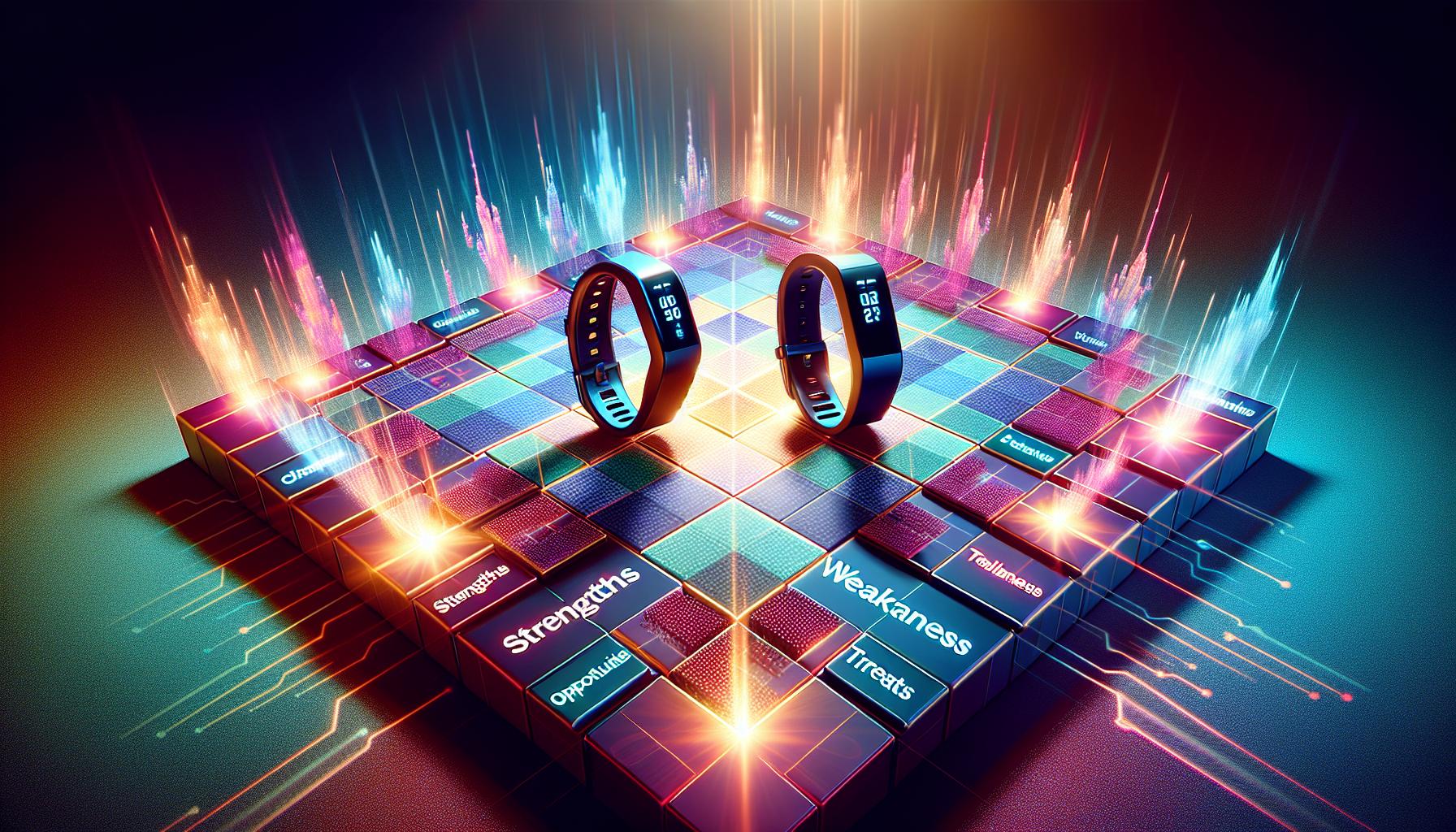Examining the Competitive Landscape: Fitbit and Garmin Face Off
Fitbit and Garmin are two prominent players in the wearable fitness tracker market, each offering a range of devices designed to help users achieve their fitness goals. As the popularity of wearable technology continues to grow, it is essential to examine the competitive landscape and understand the strengths, weaknesses, opportunities, and threats (SWOT) faced by both companies.
Strengths and Weaknesses: Analyzing Fitbit’s Wearable Fitness Trackers
Fitbit has established itself as a market leader in the wearable fitness tracker industry, thanks to its strengths in several key areas. One of Fitbit’s primary strengths is its brand recognition. Fitbit has become synonymous with fitness tracking, and its name is often the first that comes to mind when considering a wearable fitness device.
Another strength of Fitbit is its extensive range of fitness trackers. Fitbit offers a wide variety of devices, catering to different users’ needs and preferences. Whether you’re a casual walker or a professional athlete, Fitbit has a device tailored to your requirements.
However, Fitbit’s weakness lies in its lack of advanced features compared to its competitors. While Fitbit devices excel at basic fitness tracking, they often lag behind when it comes to more advanced functionalities such as built-in GPS or detailed heart rate monitoring. This limitation may deter more serious athletes who require more advanced features in their fitness trackers.
Assessing Garmin’s Wearable Fitness Trackers: Opportunities and Threats
Garmin, on the other hand, has carved out a niche in the wearable fitness tracker market by focusing on outdoor enthusiasts and athletes. One of Garmin’s key strengths is its advanced features. Garmin devices often include built-in GPS, a variety of sport-specific tracking modes, and detailed performance metrics. These features make Garmin an attractive choice for individuals who engage in outdoor activities such as running, cycling, or hiking.
Garmin also benefits from its reputation as a trusted brand in the GPS market. The company has a long history of producing high-quality GPS devices, and this expertise translates into its wearable fitness trackers. Garmin’s devices are known for their accuracy and reliability, which is vital for athletes who rely on precise data for their training.
However, Garmin faces threats from increasing competition in the market. With more companies entering the wearable fitness tracker industry, Garmin must continuously innovate and differentiate itself to maintain its market share. Additionally, Garmin’s devices often come with a higher price tag compared to its competitors, which may limit its appeal to budget-conscious consumers.
Comparative Analysis: Fitbit vs. Garmin in the Wearable Fitness Tracker Market
When comparing Fitbit and Garmin in the wearable fitness tracker market, it becomes evident that both companies have unique strengths and weaknesses. Fitbit excels in brand recognition and offers a diverse range of devices suitable for various users. However, it falls short in advanced features that appeal to serious athletes.
In contrast, Garmin focuses on providing advanced features and caters to outdoor enthusiasts and athletes. The company’s reputation for accuracy and reliability in the GPS market gives it a competitive edge. However, Garmin’s higher price point and the threat of increased competition pose challenges for its market dominance.
Conclusion: Key Takeaways from the Fitbit vs. Garmin SWOT Analysis
The SWOT analysis of Fitbit and Garmin’s wearable fitness trackers unveils important insights into their respective positions in the market. Fitbit’s brand recognition and diverse range of devices are its strengths, while the lack of advanced features may limit its appeal to serious athletes. On the other hand, Garmin’s advanced features and reputation for accuracy give it an advantage among outdoor enthusiasts, but the higher price and growing competition pose threats.
To stay competitive, both Fitbit and Garmin must leverage their strengths while addressing their weaknesses. Fitbit needs to invest in developing more advanced features to attract serious athletes, while Garmin should work on offering more affordable options without compromising on quality. As the wearable fitness tracker market continues to evolve, it will be interesting to see how these two giants adapt and innovate to stay ahead of the competition.













